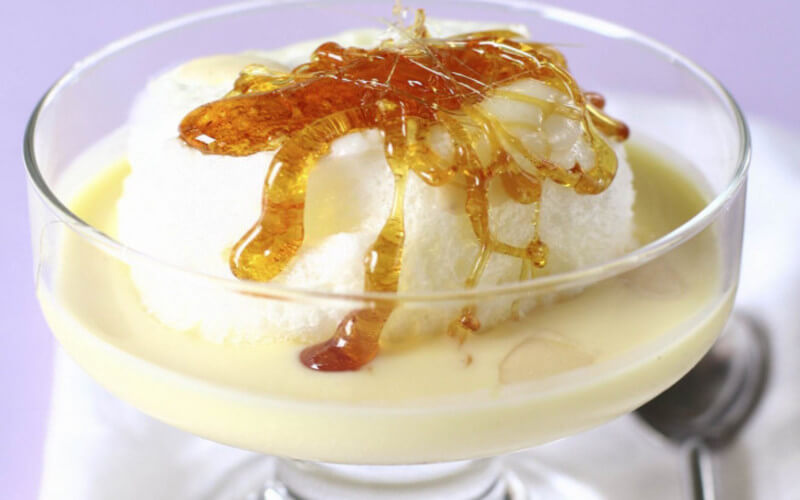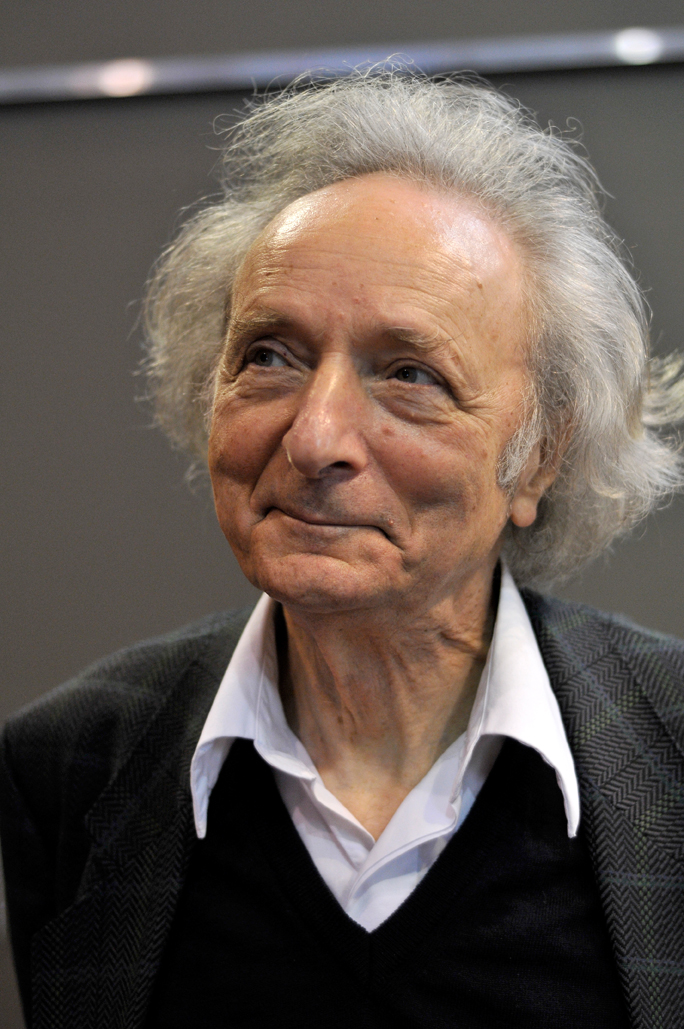Discovering the Sweet Magic of Île Flottante: A French Dessert with a Dreamy Twist
Introduction
Delicate, elegant, and as light as a cloud, Île flottante (or "floating island") is one of those French desserts that not only delights the taste buds but also carries a touch of culinary poetry. With its silky custard and fluffy meringue, this classic sweet treat is more than just a dessert, it’s a story on a plate. In today’s blog, let’s explore the history, fun facts, and some fascinating tidbits about this iconic French creation.
What is Île Flottante?
Île flottante is a classic French dessert made of a soft, poached meringue "island" floating on a pool of rich vanilla crème anglaise (a light custard sauce). It’s typically finished with a drizzle of caramel and sometimes sprinkled with toasted almonds. The contrast of textures, airy meringue and creamy custard, makes every bite melt-in-the-mouth divine.
 |
| Credit: iletaitunefoislapatisserie.com |
A Sweet History: Where Did Île Flottante Come From?
The roots of Île flottante trace back to the 17th and 18th centuries. Originally, the term “floating island” described elaborate desserts often made with sponge cake or jelly surrounded by custard or cream. Over time, the dessert evolved, and by the 19th century, French cooks had refined it into a simpler yet elegant version using meringue and crème anglaise.
Thanks to French home cooking traditions and classic cookbooks, it became a beloved staple, especially in French households and traditional bistros.
Fun Fact: The Island That Floats But Never Sinks
 |
| Credit: toutesrecettes.net |
Regional and Global Variations
While the French version typically uses poached meringue, other interpretations exist:
- In some recipes, the meringue is baked in molds rather than poached.
- Some chefs use fruit purées, matcha, or chocolate sauce instead of vanilla custard.
- In Eastern Europe, a similar dessert called Bird's Milk uses soft soufflé with caramel or chocolate topping.
This flexibility shows the dessert's global appeal and creative potential.
How to Make Île Flottante at Home
Want to recreate this floating delight in your kitchen? Here’s a simplified version to try:
Ingredients:
- 4 egg whites (room temperature)
- 4 tablespoons sugar
- 2 cups whole milk
- 1 vanilla bean or 1 tsp vanilla extract
- 4 egg yolks
- 3 tablespoons sugar (for custard)
- ½ cup sugar + 2 tbsp water (for caramel)
Instructions:
1. Make the Crème Anglaise (Custard):
- In a saucepan, warm the milk with the vanilla.
- In a bowl, whisk egg yolks with sugar until pale.
- Slowly pour the warm milk into the yolk mixture, whisking constantly.
- Return to the saucepan and stir on low heat until slightly thickened.
- Strain and chill.
2. Make the Meringue Islands:
- Beat egg whites to soft peaks. Gradually add sugar and beat until stiff and glossy.
- Bring a pot of water or milk to a gentle simmer.
- Drop spoonfuls of meringue and poach 1–2 minutes per side. Remove and drain.
3. Make the Caramel (optional):
- In a small pan, melt sugar and water over medium heat until golden brown.
- Drizzle over the meringues.
4. Assemble:
- Pour custard into shallow bowls.
- Place meringue islands on top.
- Finish with caramel drizzle and optional toasted almonds.
Bon appétit!
Cultural Connection: A Dessert Worth Quoting
“La cuisine, c’est l’art d’utiliser la nourriture pour créer du bonheur.”
— Théodore Zeldin
(“Cooking is the art of using food to create happiness.”)
Île flottante exemplifies this quote — a simple dish that brings joy, elegance, and nostalgia with every spoonful.
Something Interesting: A Michelin-Worthy Comeback
While some considered it an old-fashioned dessert for years, Île flottante has recently made a strong comeback in high-end gastronomy. Top French chefs and pastry artists have begun reinventing it with new techniques: think infused custards, crispier caramel tuile toppings, and even versions with exotic flavors like matcha, rosewater, or pistachio.
Modern versions have even inspired deconstructed takes, turning the traditional structure into gourmet art on the plate while preserving the essence of the dessert.
🎀 Summary: Why We Love Île Flottante
| 💡 Feature | ✨ Why It Matters |
|---|---|
| Light yet indulgent | A perfect balance of airiness and rich vanilla flavor |
| Elegant & timeless | A true piece of French culinary heritage |
| Easy to customize | Play with flavors, toppings, and presentation |
| Visually stunning | A dessert that's Instagram-worthy and dinner-party ready |
| Culturally rich | Tells a story of history, creativity, and refinement |
Final Thoughts
Whether you're tasting it for the first time in a French café or recreating it at home, Île flottante is a dessert that never fails to leave an impression. It’s poetic, it’s delicious, and above all, it’s quintessentially French.
Have you ever made or tasted Île flottante?
Leave a comment below or tag your dessert photos with #FloatingIslandMagic, we’d love to see them!
You may like
Read more:




